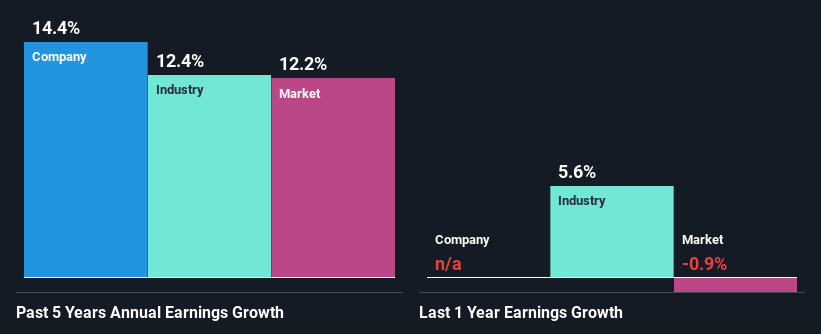Smiths Group plc's (LON:SMIN) Stock Has Fared Decently: Is the Market Following Strong Financials?
Smiths Group's (LON:SMIN) stock up by 2.8% over the past month. Since the market usually pay for a company’s long-term financial health, we decided to study the company’s fundamentals to see if they could be influencing the market. Specifically, we decided to study Smiths Group's ROE in this article.
Return on equity or ROE is an important factor to be considered by a shareholder because it tells them how effectively their capital is being reinvested. In simpler terms, it measures the profitability of a company in relation to shareholder's equity.
See our latest analysis for Smiths Group
How To Calculate Return On Equity?
ROE can be calculated by using the formula:
Return on Equity = Net Profit (from continuing operations) ÷ Shareholders' Equity
So, based on the above formula, the ROE for Smiths Group is:
11% = UK£234m ÷ UK£2.1b (Based on the trailing twelve months to January 2024).
The 'return' is the amount earned after tax over the last twelve months. So, this means that for every £1 of its shareholder's investments, the company generates a profit of £0.11.
What Is The Relationship Between ROE And Earnings Growth?
So far, we've learned that ROE is a measure of a company's profitability. We now need to evaluate how much profit the company reinvests or "retains" for future growth which then gives us an idea about the growth potential of the company. Generally speaking, other things being equal, firms with a high return on equity and profit retention, have a higher growth rate than firms that don’t share these attributes.
A Side By Side comparison of Smiths Group's Earnings Growth And 11% ROE
To start with, Smiths Group's ROE looks acceptable. Further, the company's ROE compares quite favorably to the industry average of 8.4%. This probably laid the ground for Smiths Group's moderate 14% net income growth seen over the past five years.
As a next step, we compared Smiths Group's net income growth with the industry and found that the company has a similar growth figure when compared with the industry average growth rate of 12% in the same period.
The basis for attaching value to a company is, to a great extent, tied to its earnings growth. It’s important for an investor to know whether the market has priced in the company's expected earnings growth (or decline). This then helps them determine if the stock is placed for a bright or bleak future. Has the market priced in the future outlook for SMIN? You can find out in our latest intrinsic value infographic research report.
Is Smiths Group Efficiently Re-investing Its Profits?
The high three-year median payout ratio of 85% (or a retention ratio of 15%) for Smiths Group suggests that the company's growth wasn't really hampered despite it returning most of its income to its shareholders.
Additionally, Smiths Group has paid dividends over a period of at least ten years which means that the company is pretty serious about sharing its profits with shareholders. Existing analyst estimates suggest that the company's future payout ratio is expected to drop to 39% over the next three years. As a result, the expected drop in Smiths Group's payout ratio explains the anticipated rise in the company's future ROE to 16%, over the same period.
Conclusion
Overall, we are quite pleased with Smiths Group's performance. In particular, its high ROE is quite noteworthy and also the probable explanation behind its considerable earnings growth. Yet, the company is retaining a small portion of its profits. Which means that the company has been able to grow its earnings in spite of it, so that's not too bad. That being so, the latest analyst forecasts show that the company will continue to see an expansion in its earnings. Are these analysts expectations based on the broad expectations for the industry, or on the company's fundamentals? Click here to be taken to our analyst's forecasts page for the company.
Have feedback on this article? Concerned about the content? Get in touch with us directly. Alternatively, email editorial-team (at) simplywallst.com.
This article by Simply Wall St is general in nature. We provide commentary based on historical data and analyst forecasts only using an unbiased methodology and our articles are not intended to be financial advice. It does not constitute a recommendation to buy or sell any stock, and does not take account of your objectives, or your financial situation. We aim to bring you long-term focused analysis driven by fundamental data. Note that our analysis may not factor in the latest price-sensitive company announcements or qualitative material. Simply Wall St has no position in any stocks mentioned.

 Yahoo Finance
Yahoo Finance 
